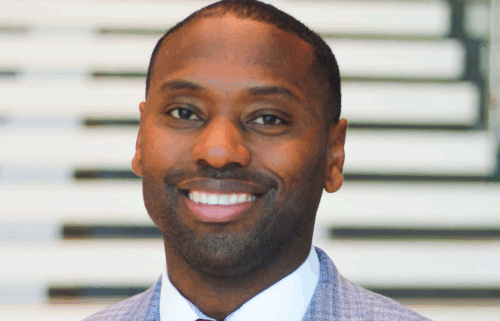Skepticism and hope as USA Gymnastics enters post-Nassar era

By WILL GRAVES
AP Sports Writer
TAMPA, Fla. (AP) — The blue and red flames of the new logo USA Gymnastics unveiled this week are designed to symbolize rebirth. They might as well double as a metaphor for the self-inflicted damage the organization has endured for the better part of a decade.
The Larry Nassar sexual abuse scandal shook the sport’s national governing body to its core. Hundreds of victims of abuse at the hands of the former national team doctor came forward to tell their stories, some of them highlighting a toxic culture that allowed Nassar to hide in plain sight for decades.
The fallout included sending Nassar to jail essentially for the rest of his life, a massive leadership overhaul within the organization — more than half of the current staff has been with the organization for three years or less — and last December a $380 million settlement between abuse victims, USA Gymnastics and the U.S. Olympic and Paralympic Committee. The agreement included a series of provisions designed to promote transparency, accountability and safety within a program that used to be the gold standard of the U.S. Olympic movement.
The settlement assured the organization’s survival. And that process — as painful and public and humiliating as it was — might have been the easy part.
Now comes a far more difficult task: making sure the changes — some of them implemented years ago, others still in the works — actually stick. And president Li Li Leung, hired in 2019, knows it.
“We’re truly committed to the pursuit of a culture that will prevent these failings from ever happening again,” Leung said Wednesday on the eve of the 2022 U.S. Championships. “So now how we feel doesn’t really matter. It’s our actions that matter.”
One of the most visible will be on display for the first time this weekend at Amalie Arena. USA Gymnastics overhauled its women’s elite program over the winter, dividing the job of national team coordinator into three separate but equal gigs. Dan Baker is now the developmental lead, with Olympic medalist and 2005 world champion Chellsie Memmel serving as the technical lead and 2008 Olympic silver medalist Alicia Sacramone Quinn serving as the strategic lead.
The new paradigm was designed to make sure no one person wielded too much power and influence within the program. The arrangement is still very much in the feeling-out stage, though the hiring of two former athletes who have excelled in the crucible of world-class competition — Memmel herself just a year removed from an unlikely comeback in her early 30s — caught the attention of 2020 Olympic silver medalist Jordan Chiles.
“It is kind of cool having people who were just there doing the same thing that we did in this elite world,” said Chiles, who is in the women’s field this weekend. “It’s kind of cool that they can connect to us in that way. So it is kind of exciting to see how they’re going to work with us.”
The 21-year-old Chiles joined the senior national team in 2017 as the scope of the Nassar scandal deepened and as USA Gymnastics began to try to plot a way forward, a path riddled by missteps as it went through multiple presidents and national team coordinators.
While there is a general sense there has been incremental progress at the upper levels of the sport over the last five years, Chiles believes more work needs to be done.
“Having that ability to make our voices heard is where it needs to kind of change a little, I would have to say, because sometimes it can be hard,” Chiles said.
Listening is one of Quinn’s primary goals. She intends to meet with each athlete during national team camps to be both a sounding board and a guide.
“(I want to) to be able to see how they’re doing physically and mentally and tell them where I think they’re doing great, where I think they need to put some work in,” she said. “And that way everybody kind of knows where they stand.”
Where the women’s program stands at the moment is at a bit of a crossroads. The easing of NCAA rules on name, image and likeness compensation has allowed Olympians like Chiles and floor exercise gold medalist Jade Carey to compete collegiately and at the elite level at the same time.
They’ll also be getting a first-hand glimpse at the latest iteration of “change” in an organization that’s seen plenty of it over the last five-plus years. Chiles is curious about what this latest shift will look like, to see if the metamorphosis goes deeper than a new logo and mission statement.
Like nearly everyone else associated with the sport, she’s both skeptical and cautiously optimistic.
“I mean, obviously, I am going to be looking at what’s new and what’s different and how everything’s just going to play out this weekend,” Chiles said. “So we’ll see how everything turns out.”
___
More AP sports: https://apnews.com/hub/apf-sports and https://twitter.com/AP_Sports




